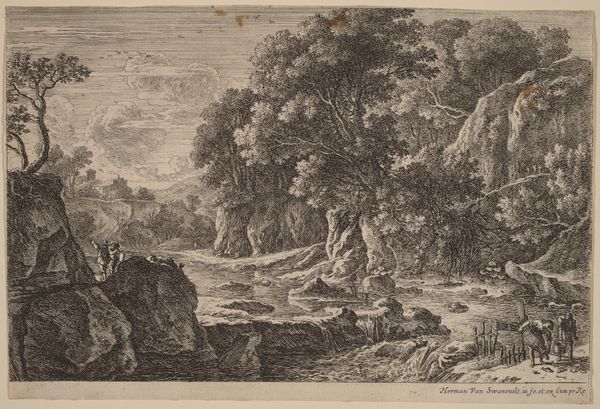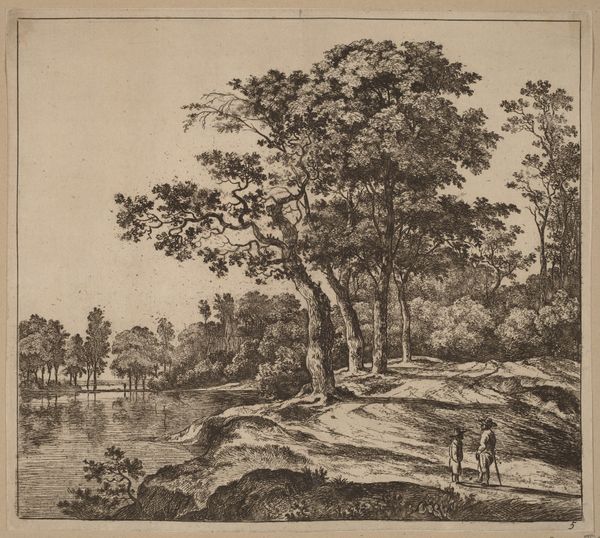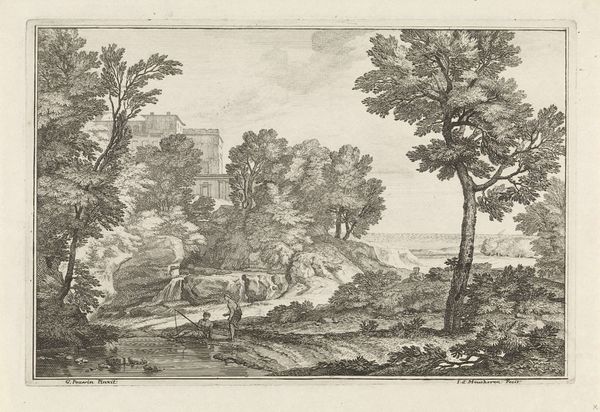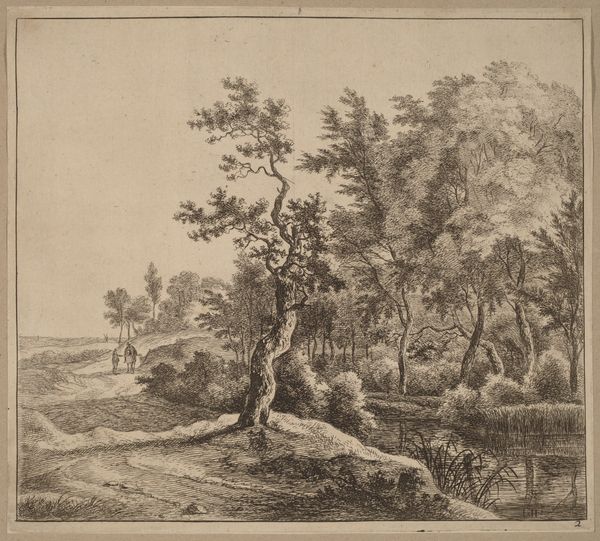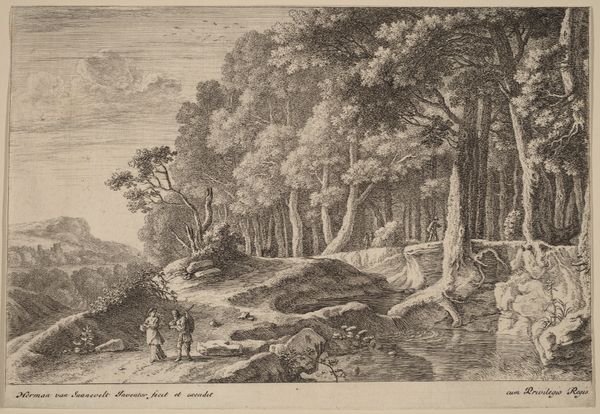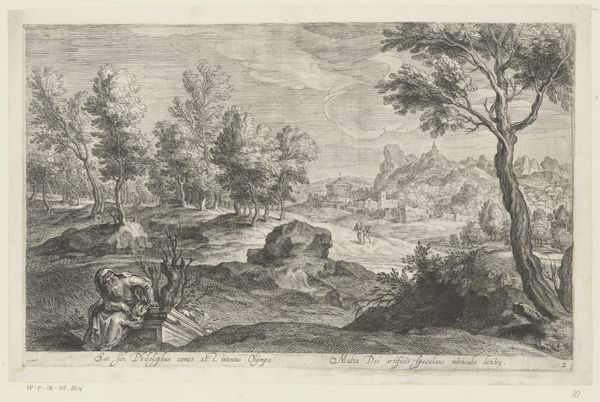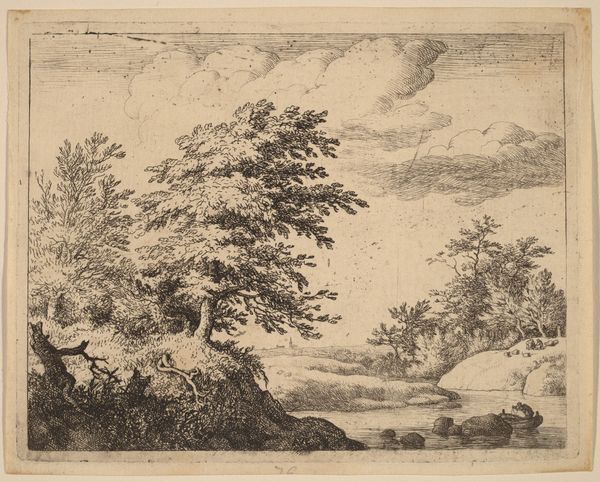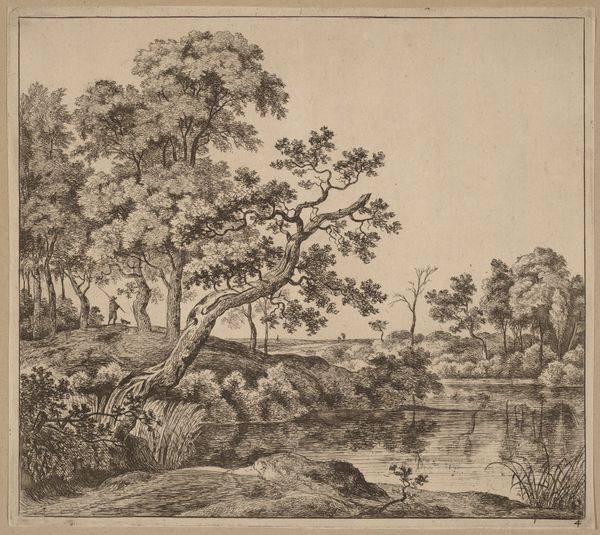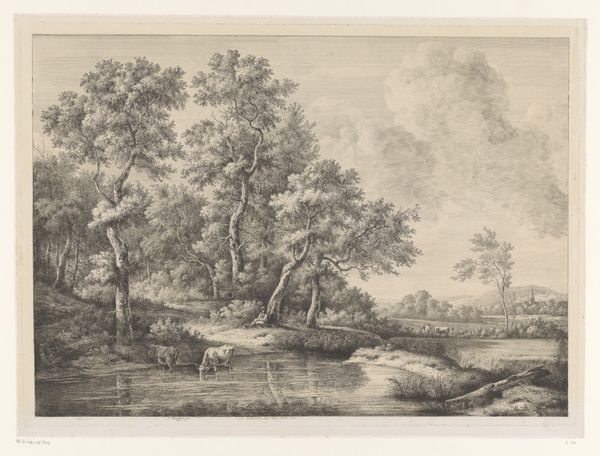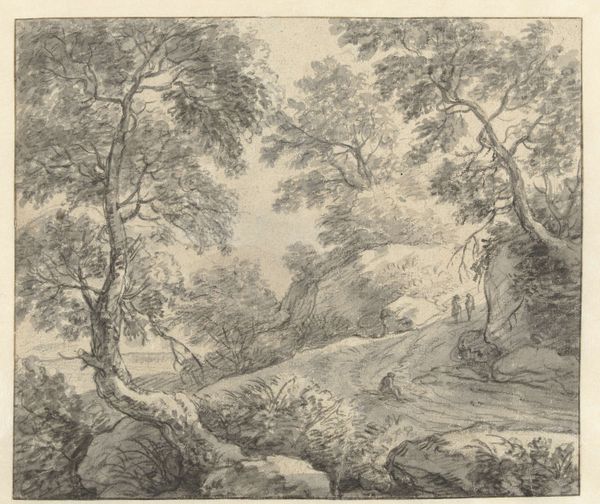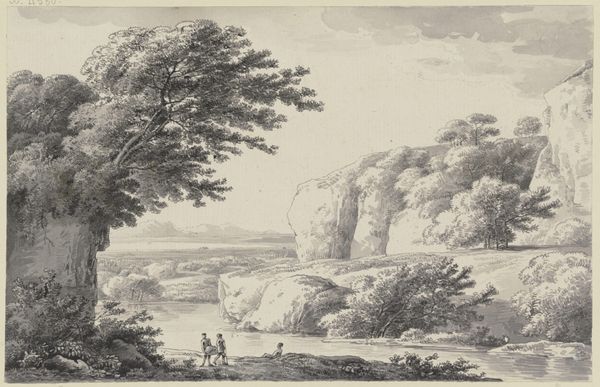
print, etching, engraving
#
dutch-golden-age
# print
#
etching
#
landscape
#
genre-painting
#
engraving
Copyright: National Gallery of Art: CC0 1.0
Jan Hackaert made this landscape with river and rock in the Netherlands, probably around the mid-17th century. It's a carefully constructed scene etched onto a plate. The image's meaning comes from its visual codes. The figures, likely hunters, are small, dwarfed by nature's grandeur. Hackaert is reminding us of the relationship between people and land in the Dutch Golden Age. As the Dutch Republic thrived economically, landscape art became popular, reflecting both national pride and a developing awareness of natural resources. Consider how the art market itself played a role. Artists like Hackaert catered to a prosperous merchant class, eager to display their wealth and refined taste through art. Studying these prints today, we can consult period documents, market reports, and even literature to understand the complex interplay between art, society, and the institutions that shaped its creation. Ultimately, art's meaning isn't fixed. It evolves with our understanding of its historical context.
Comments
No comments
Be the first to comment and join the conversation on the ultimate creative platform.
